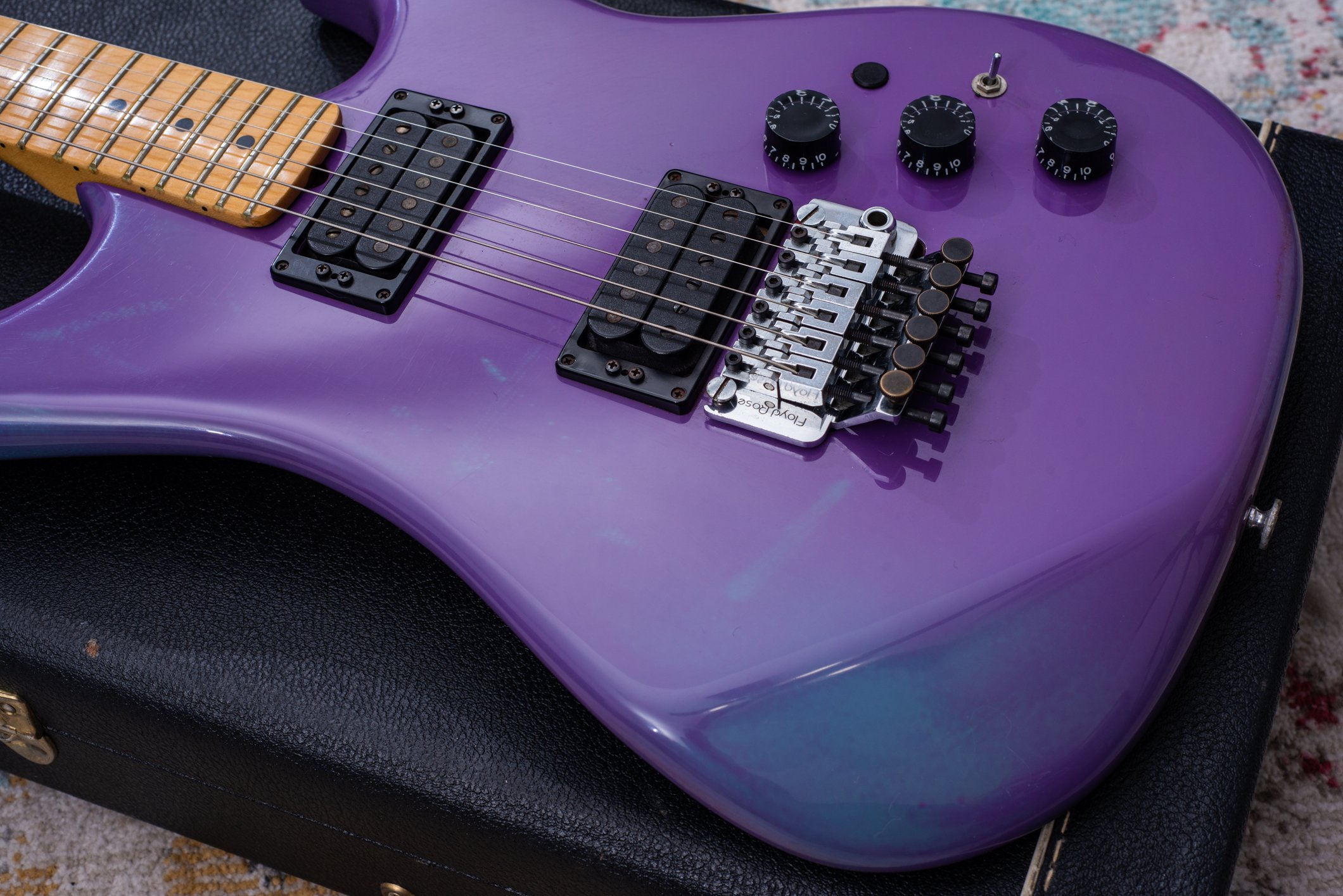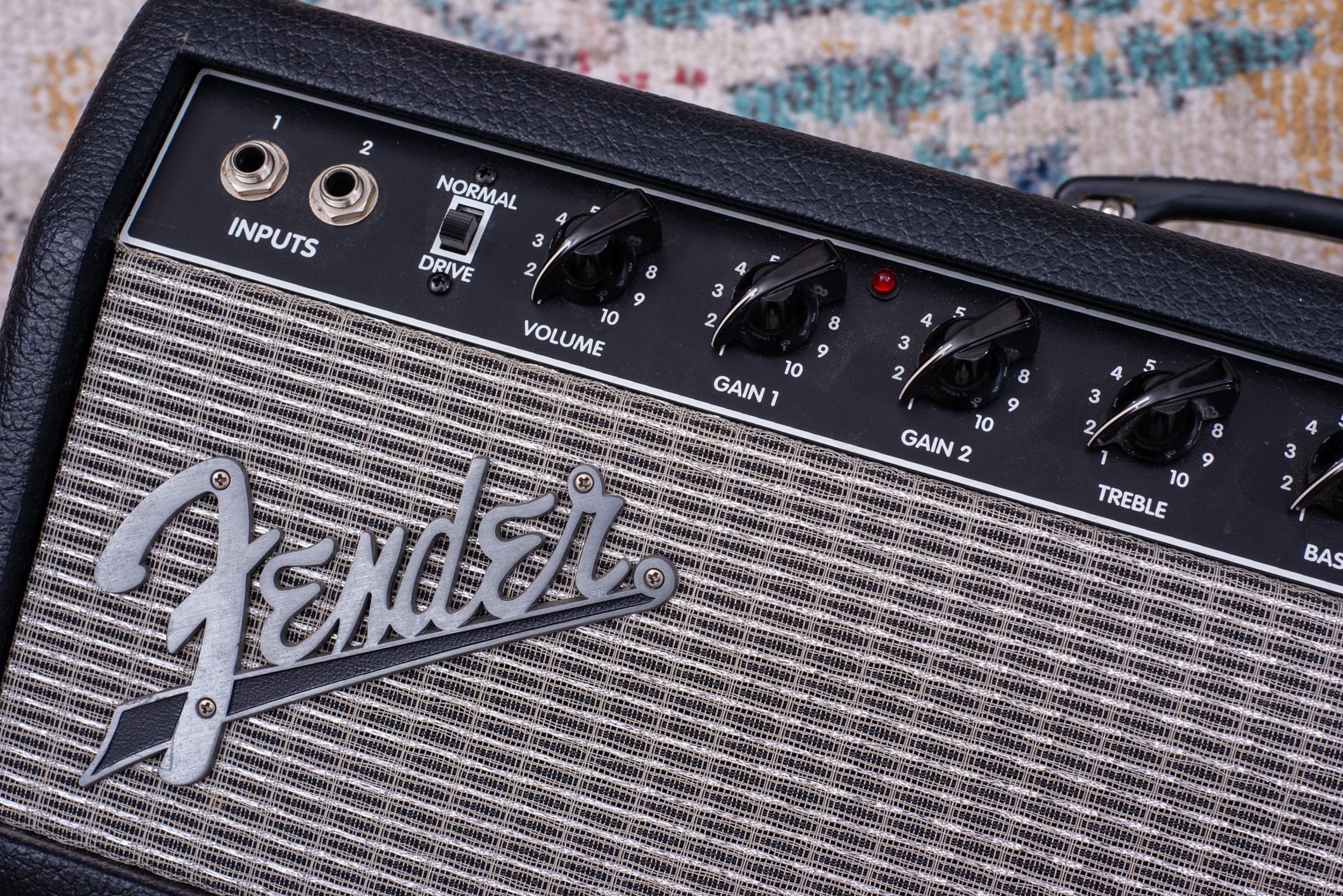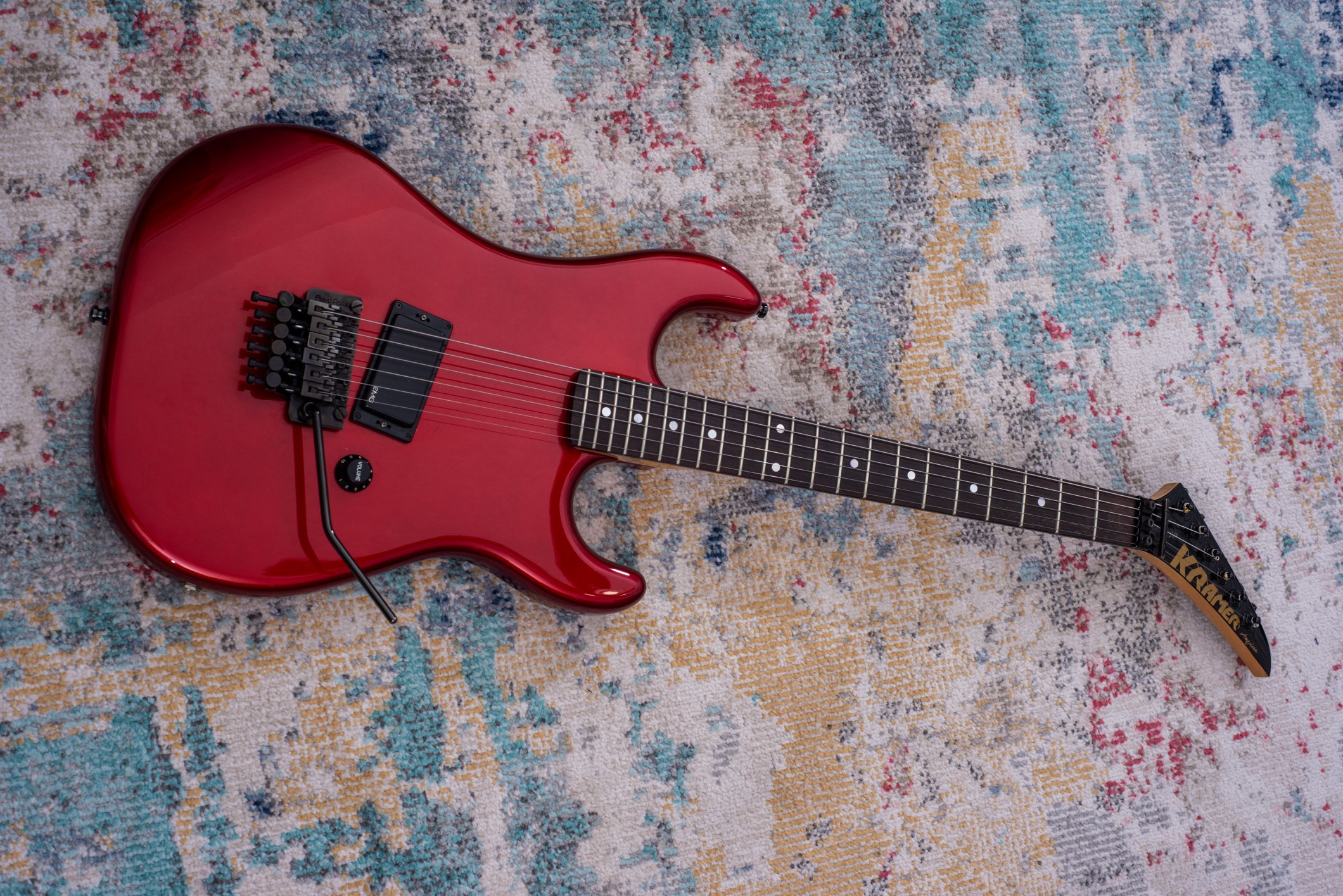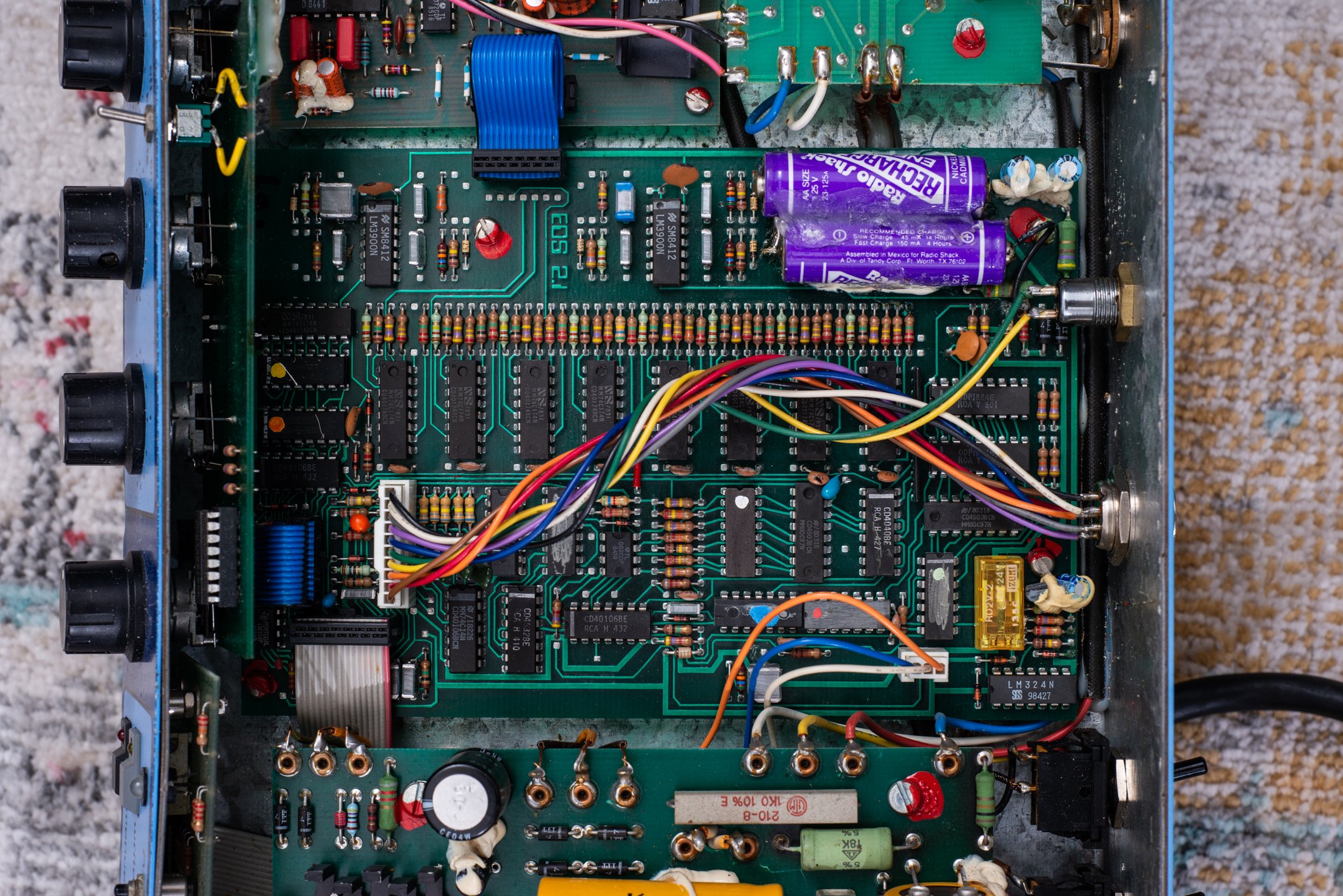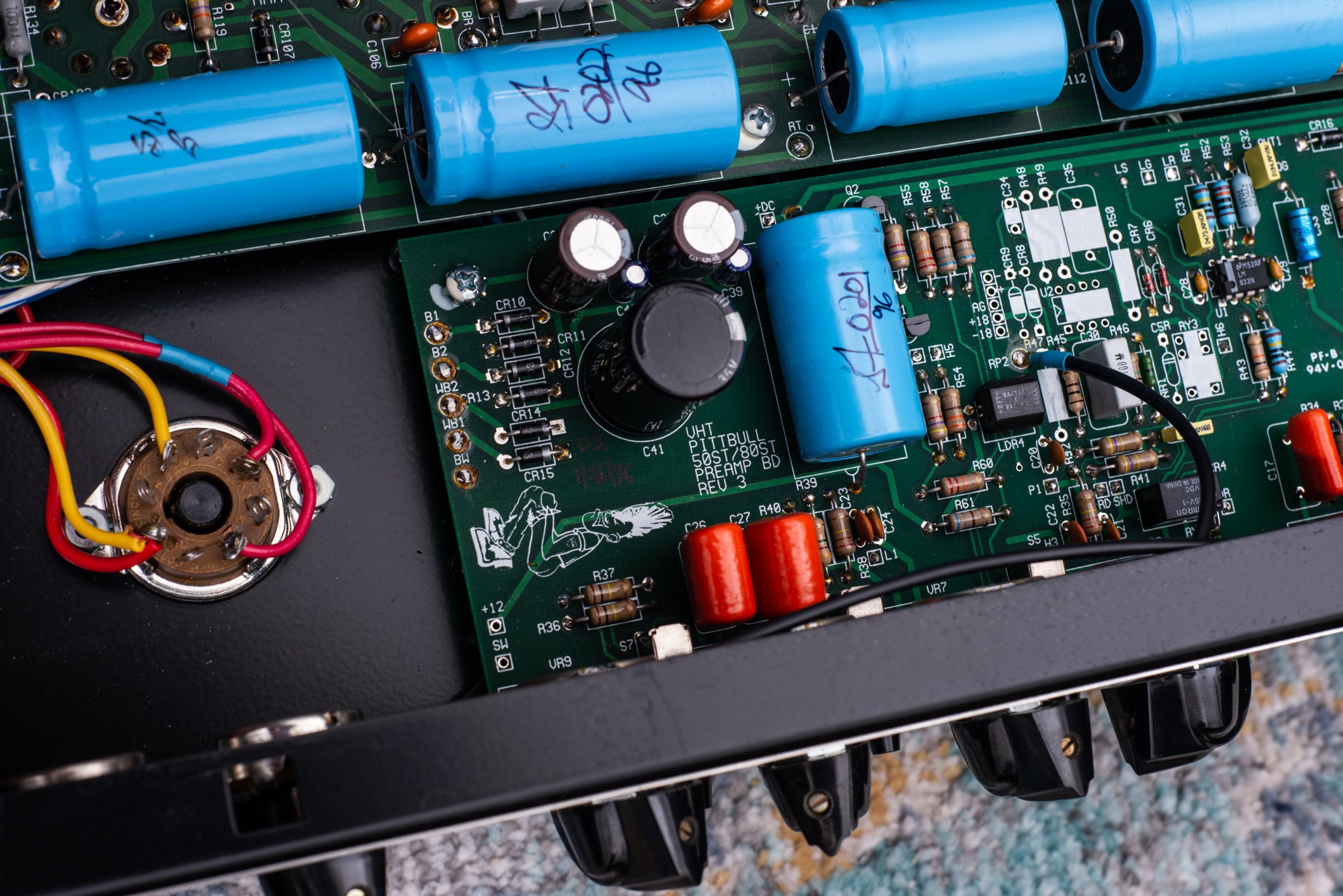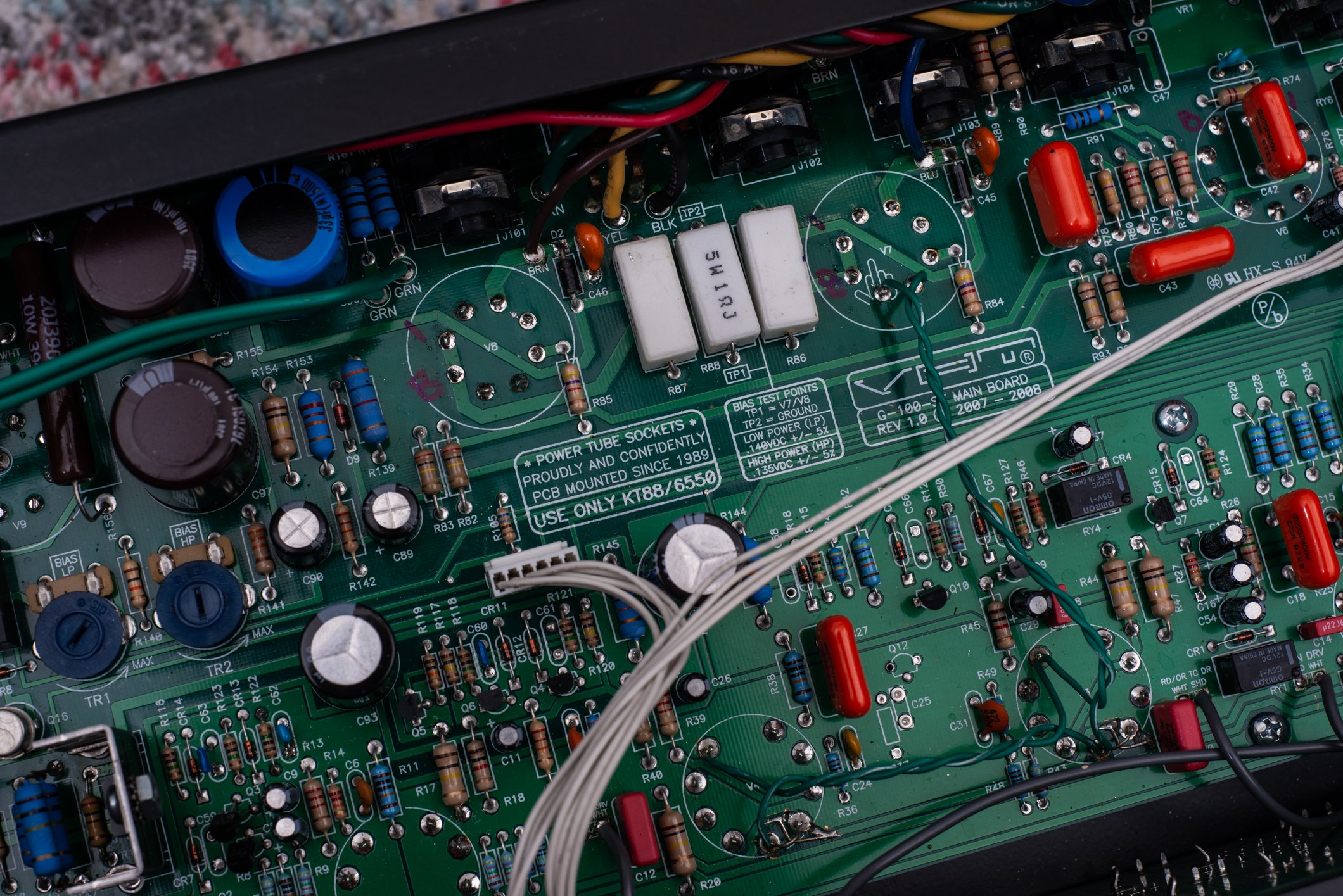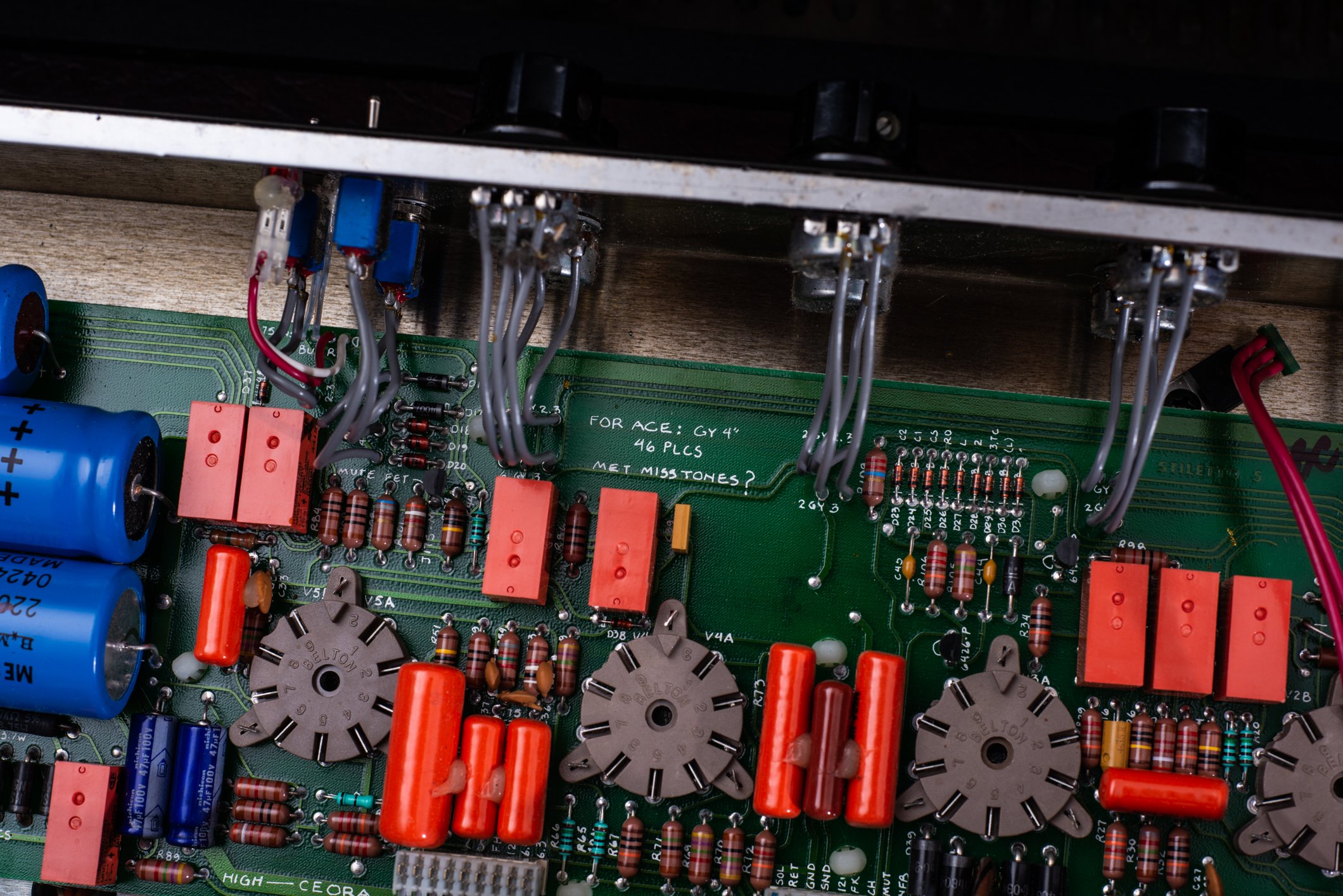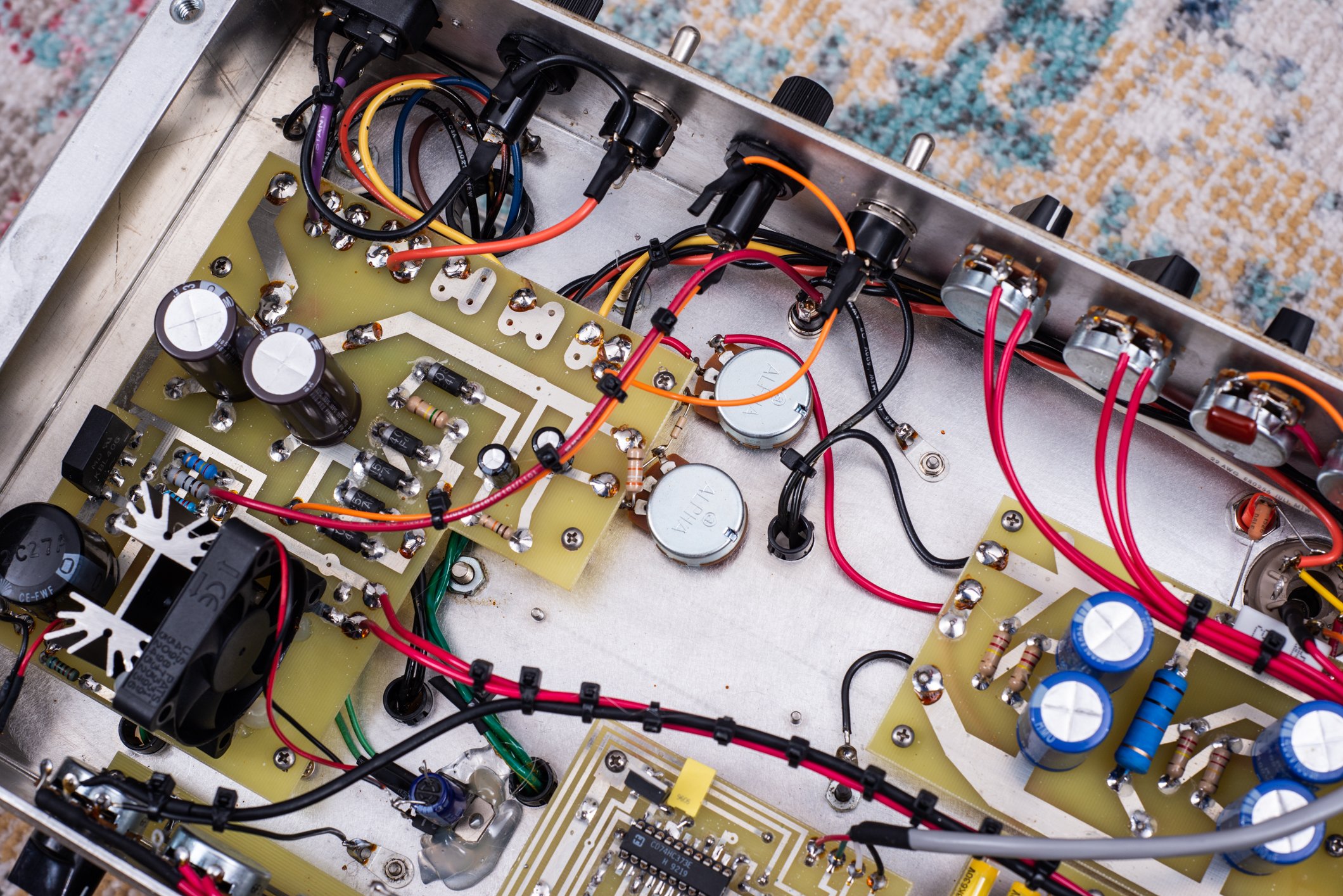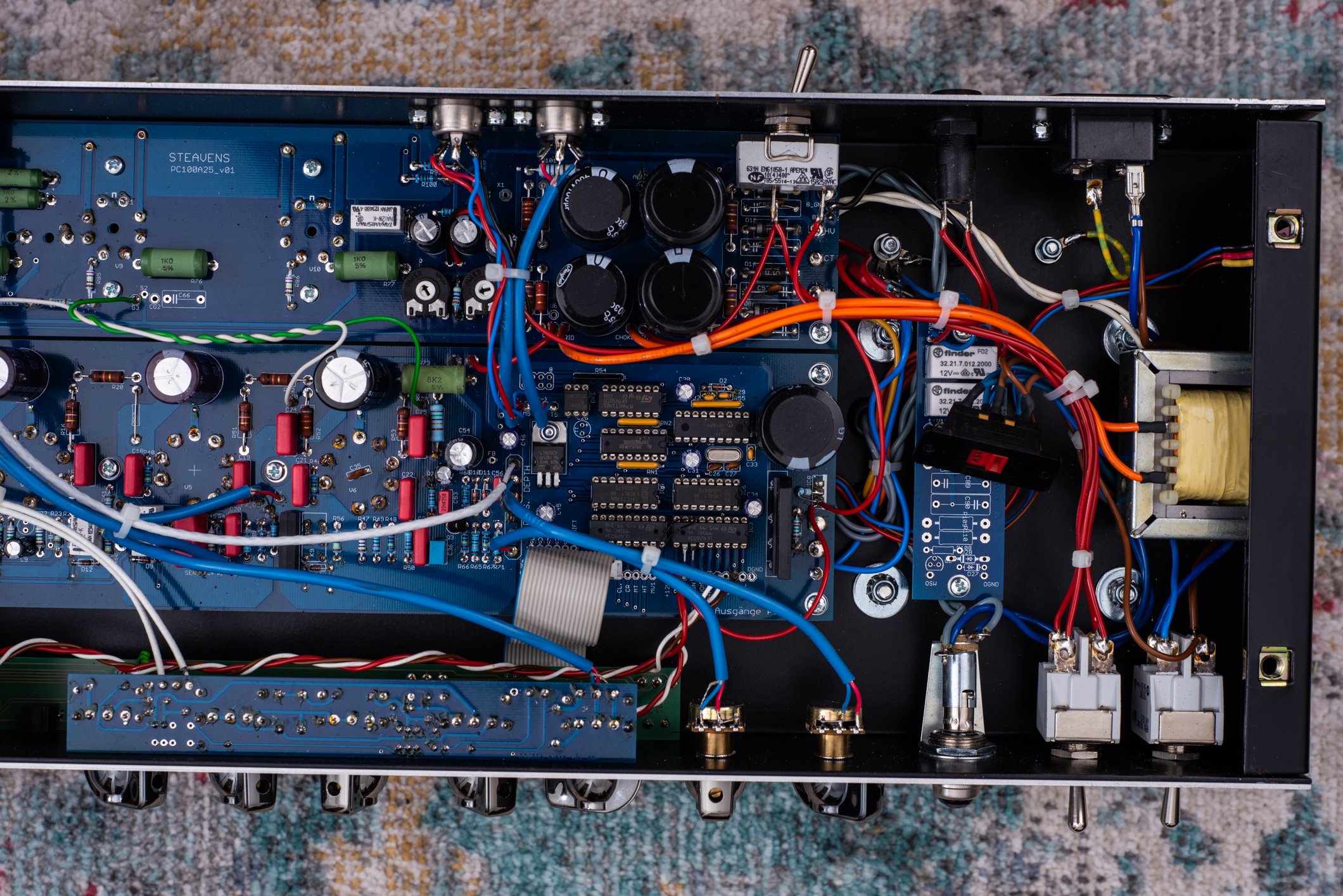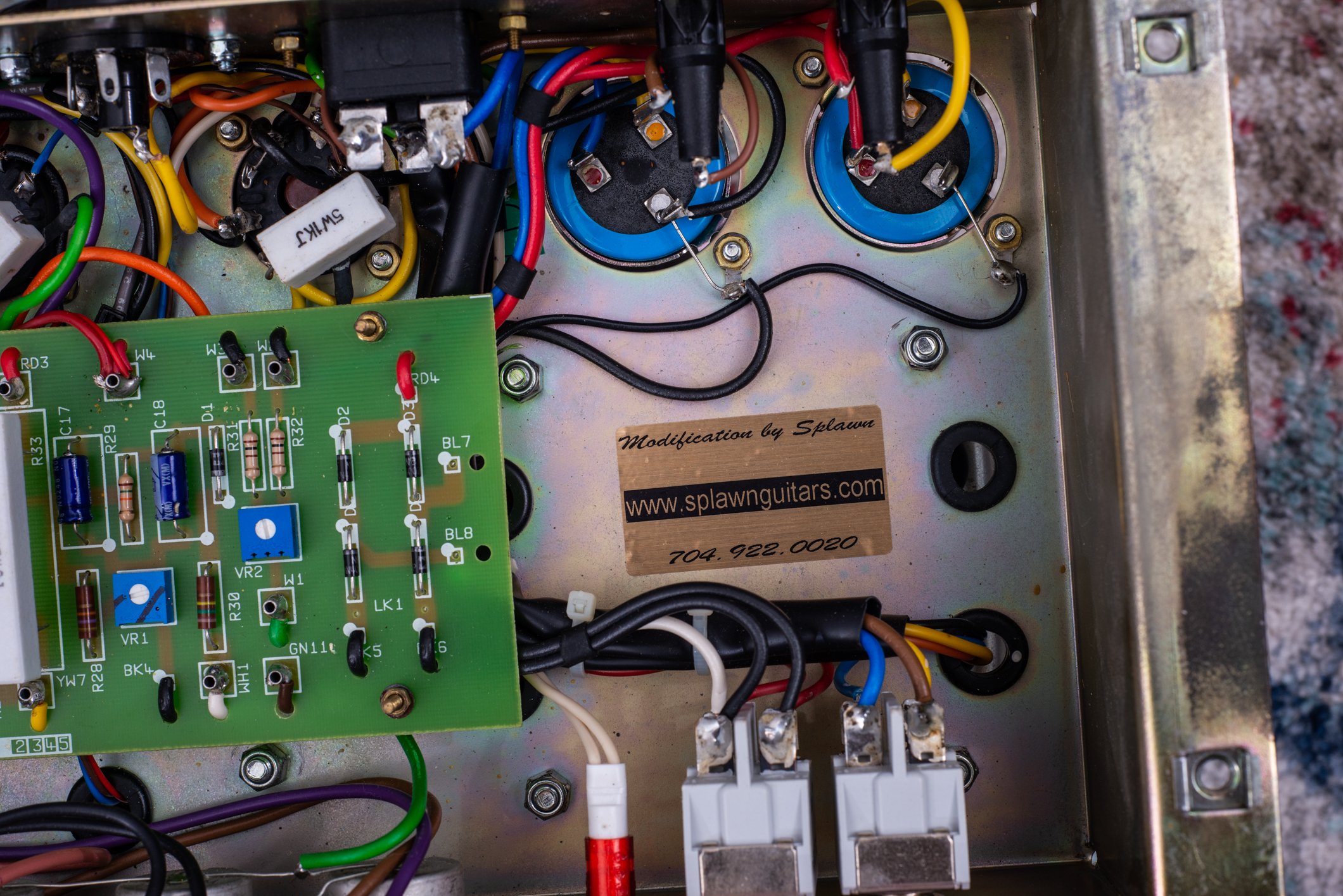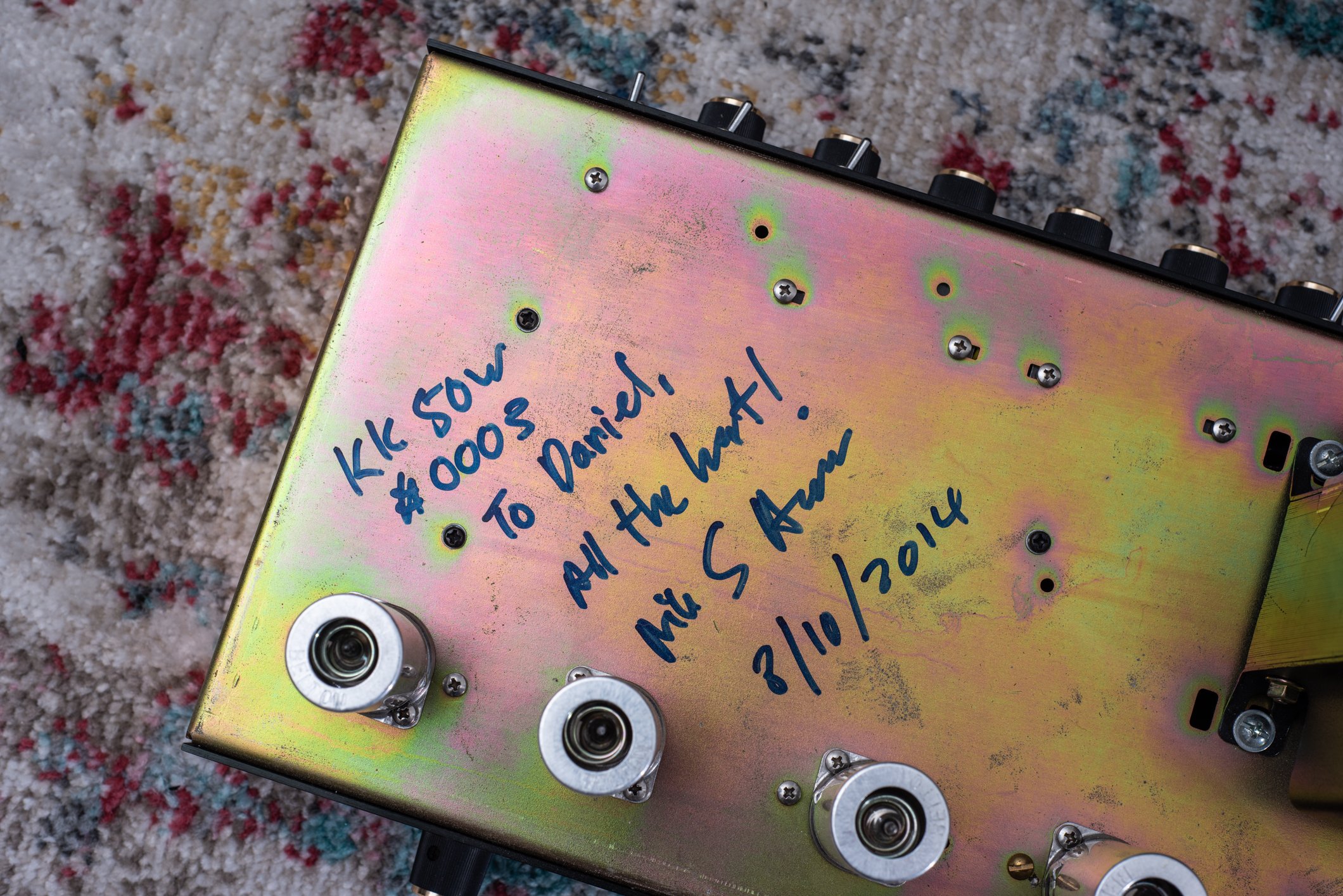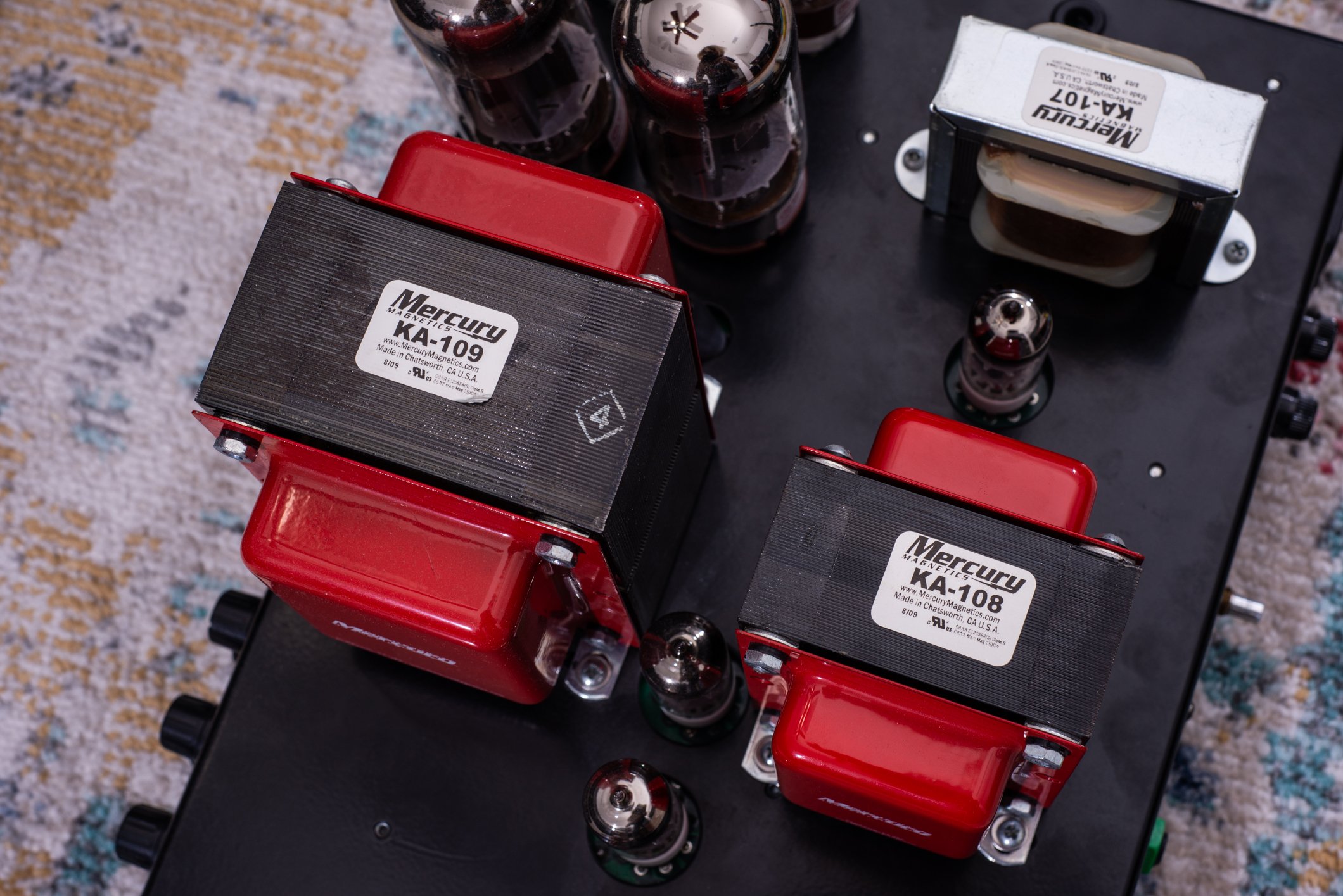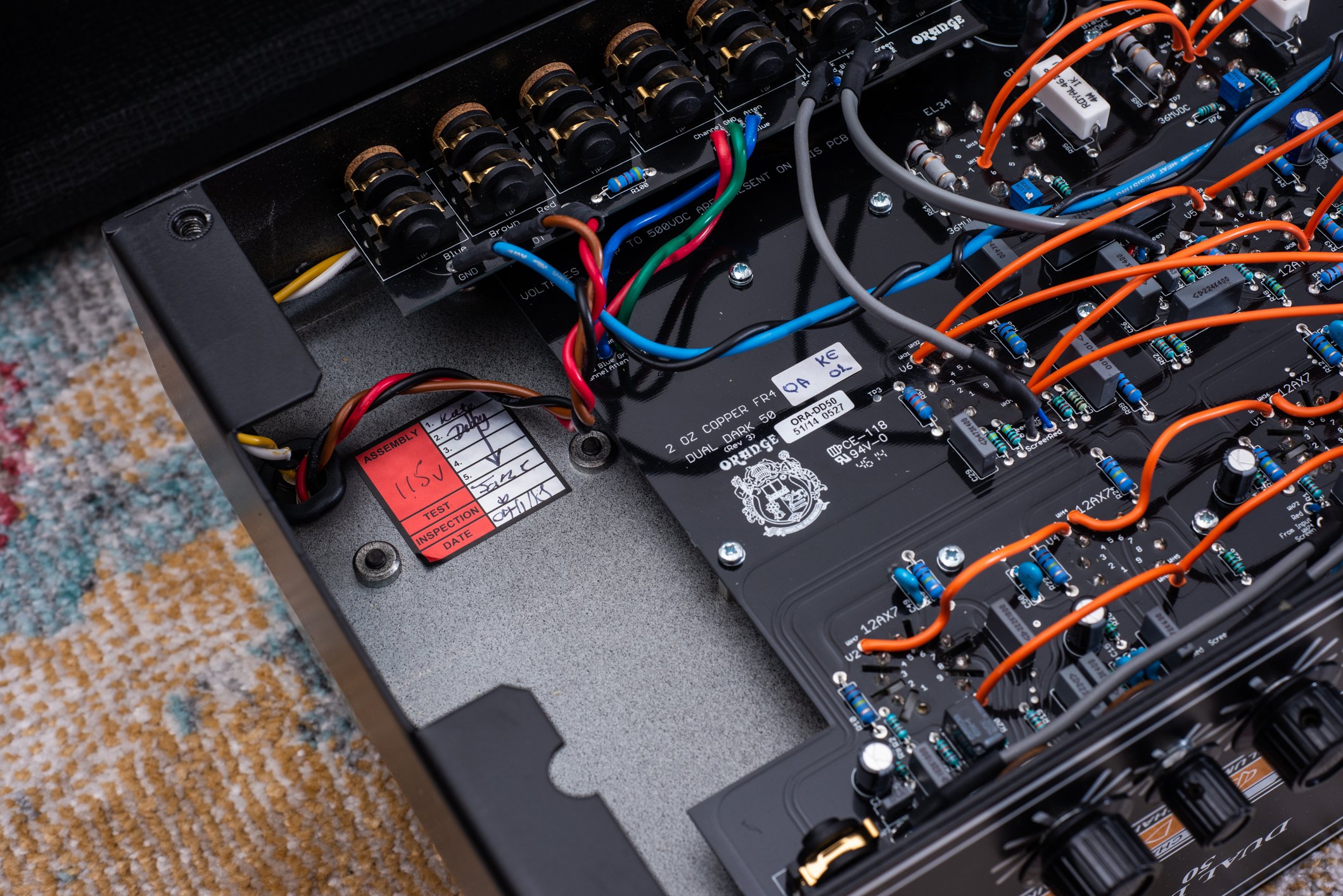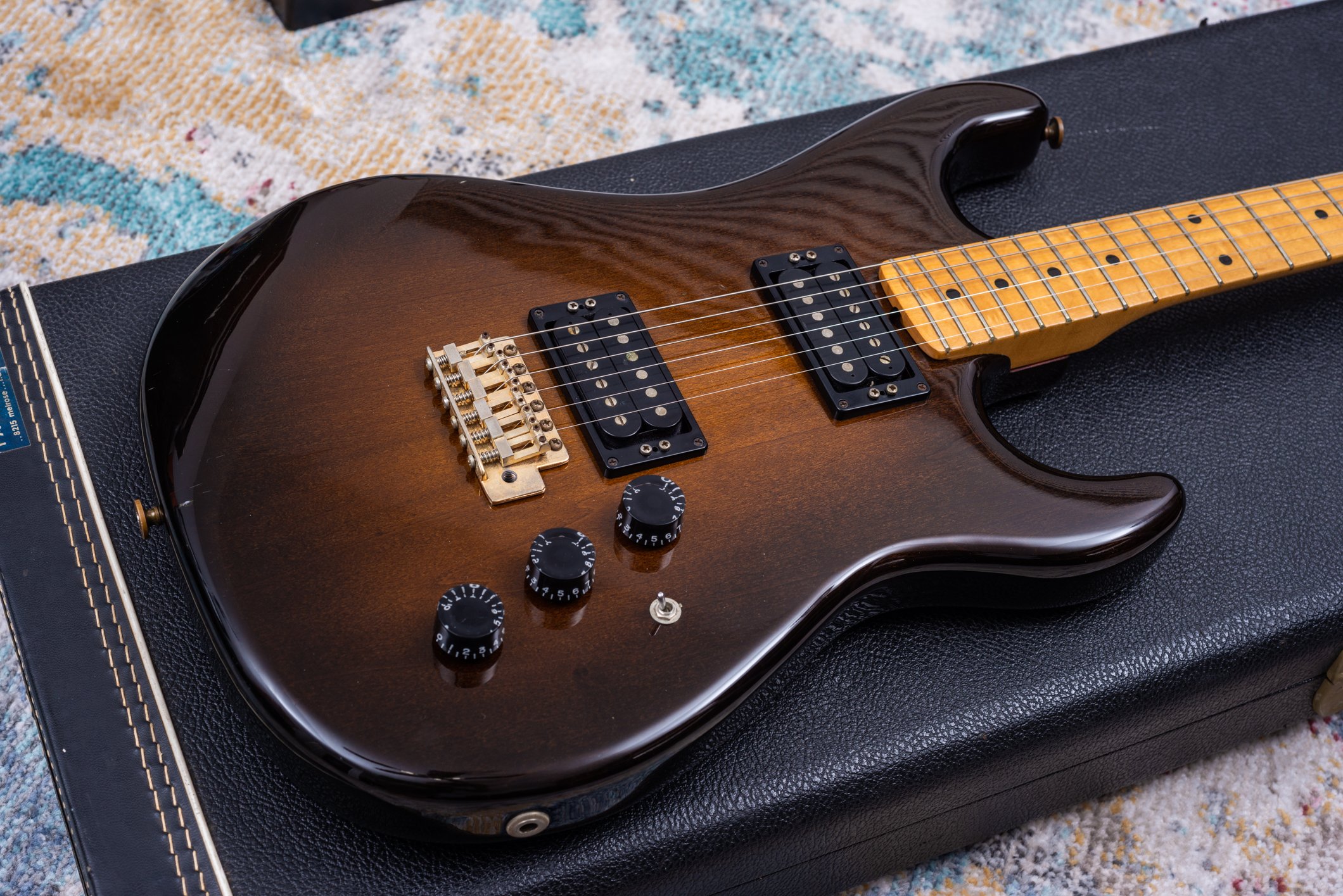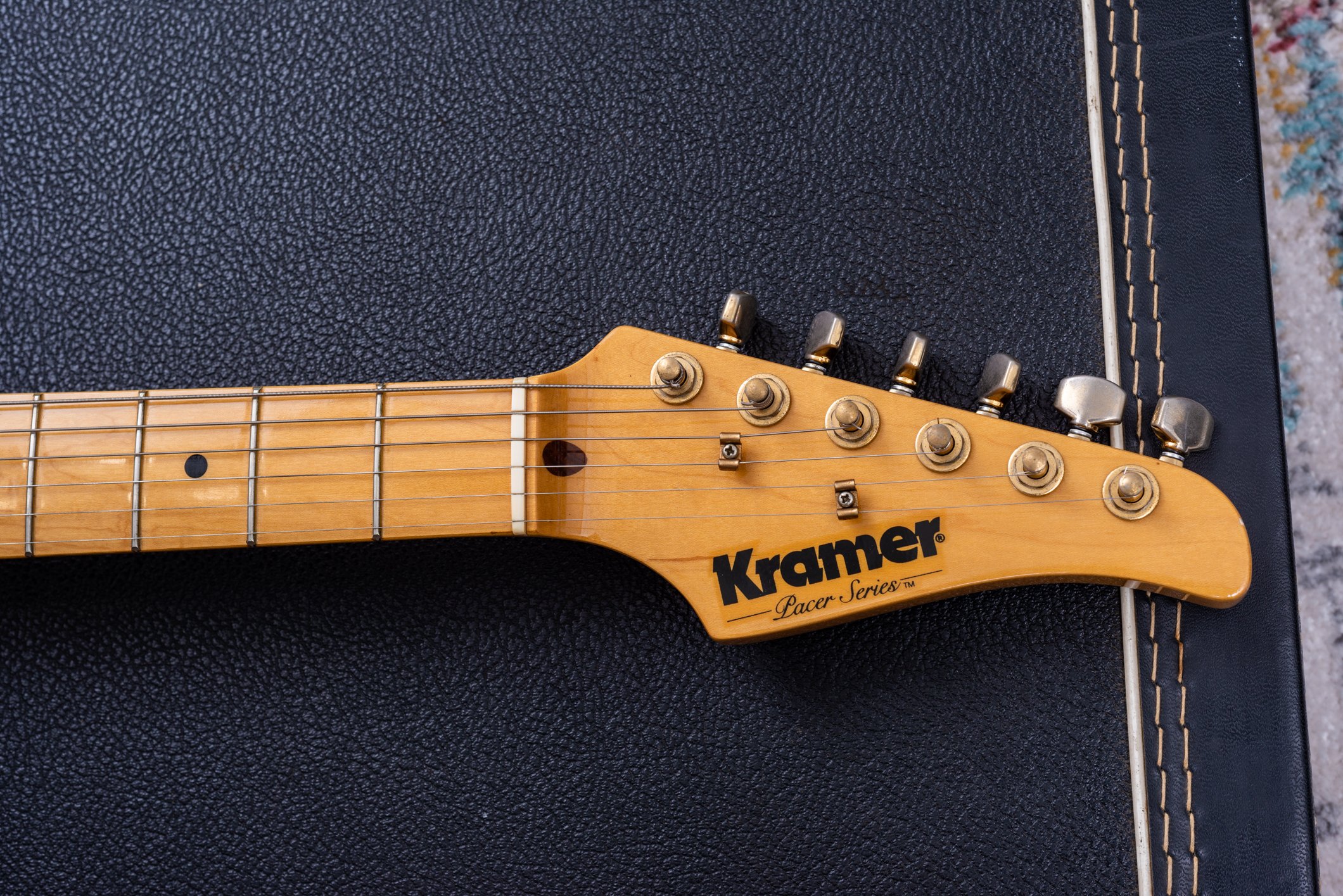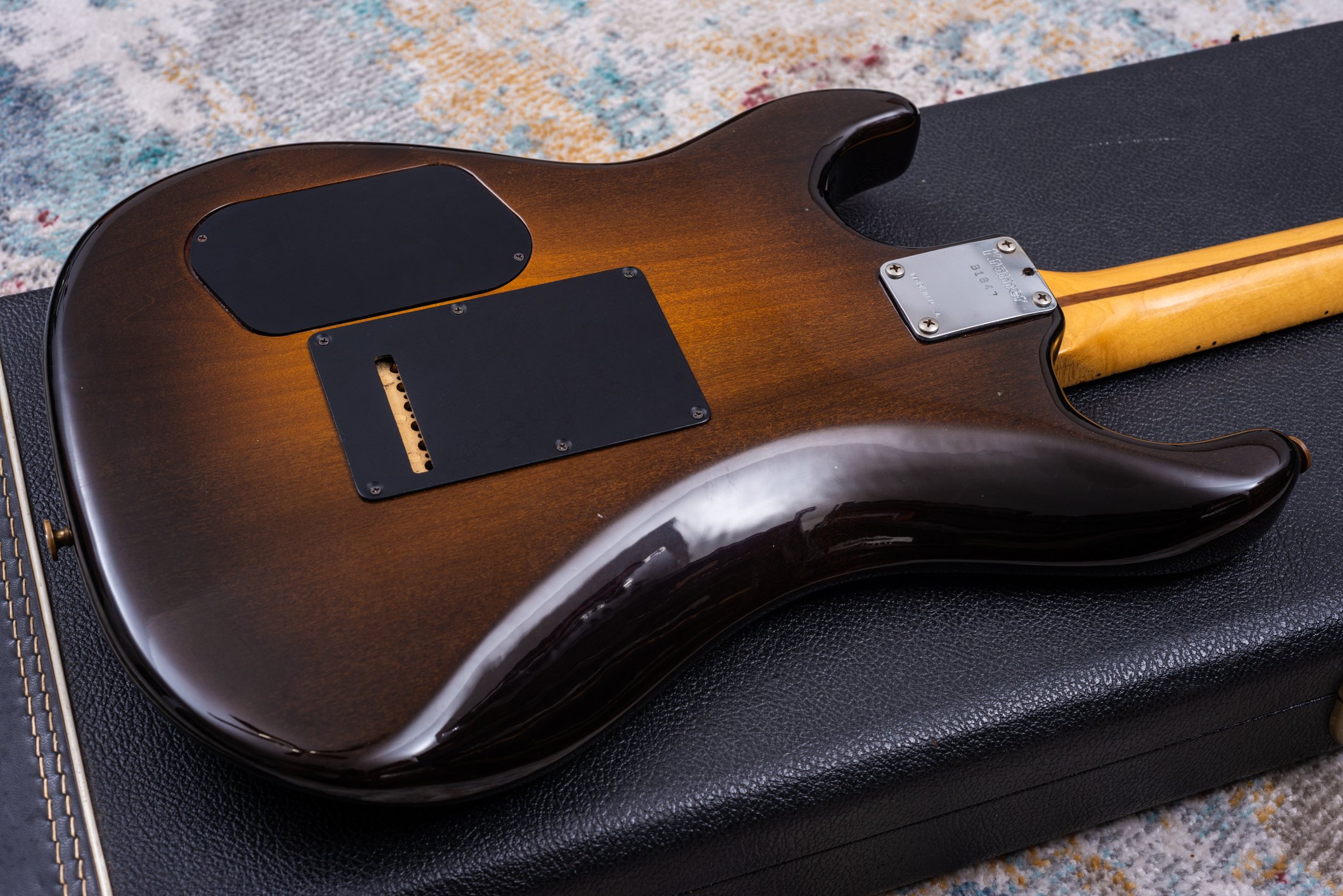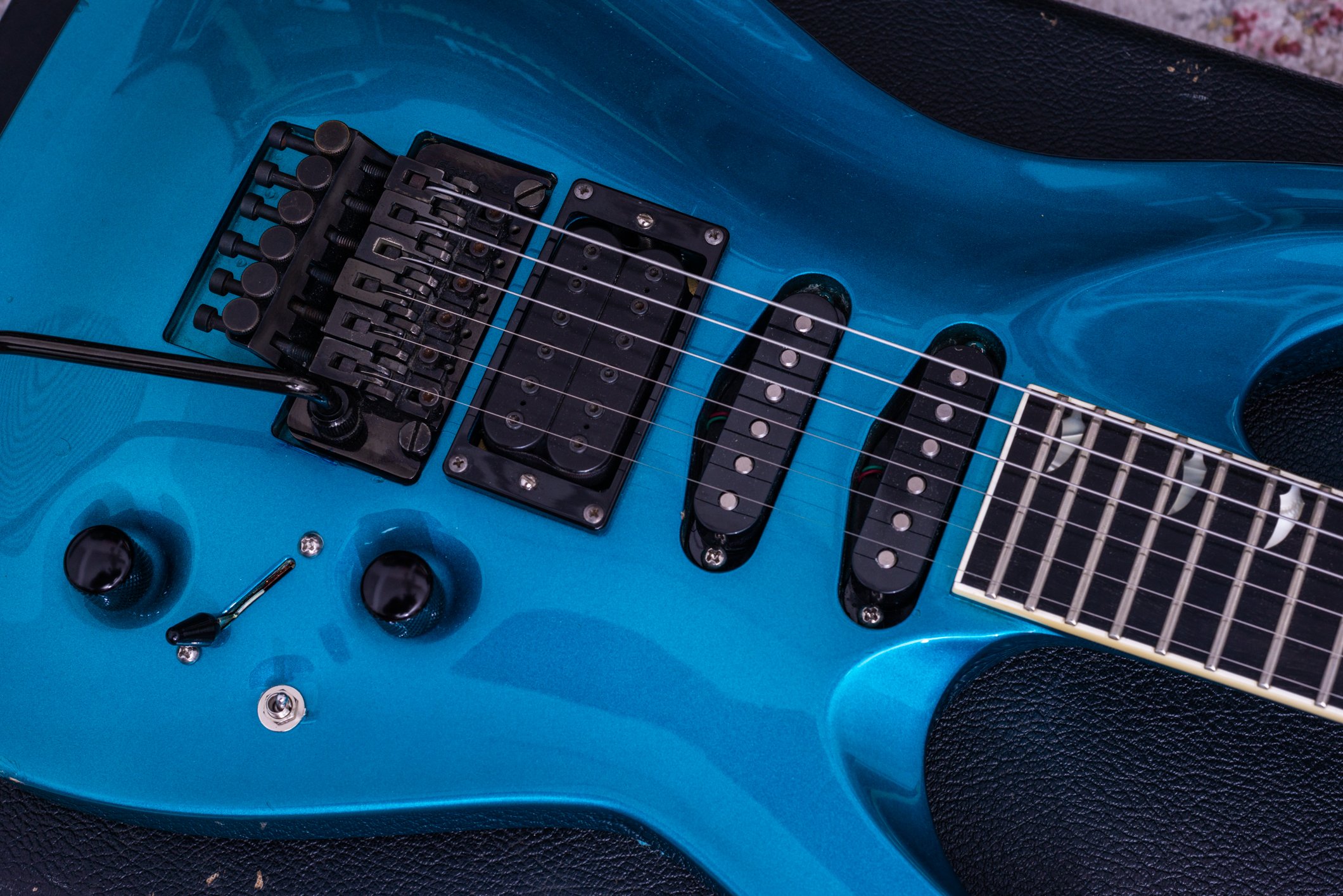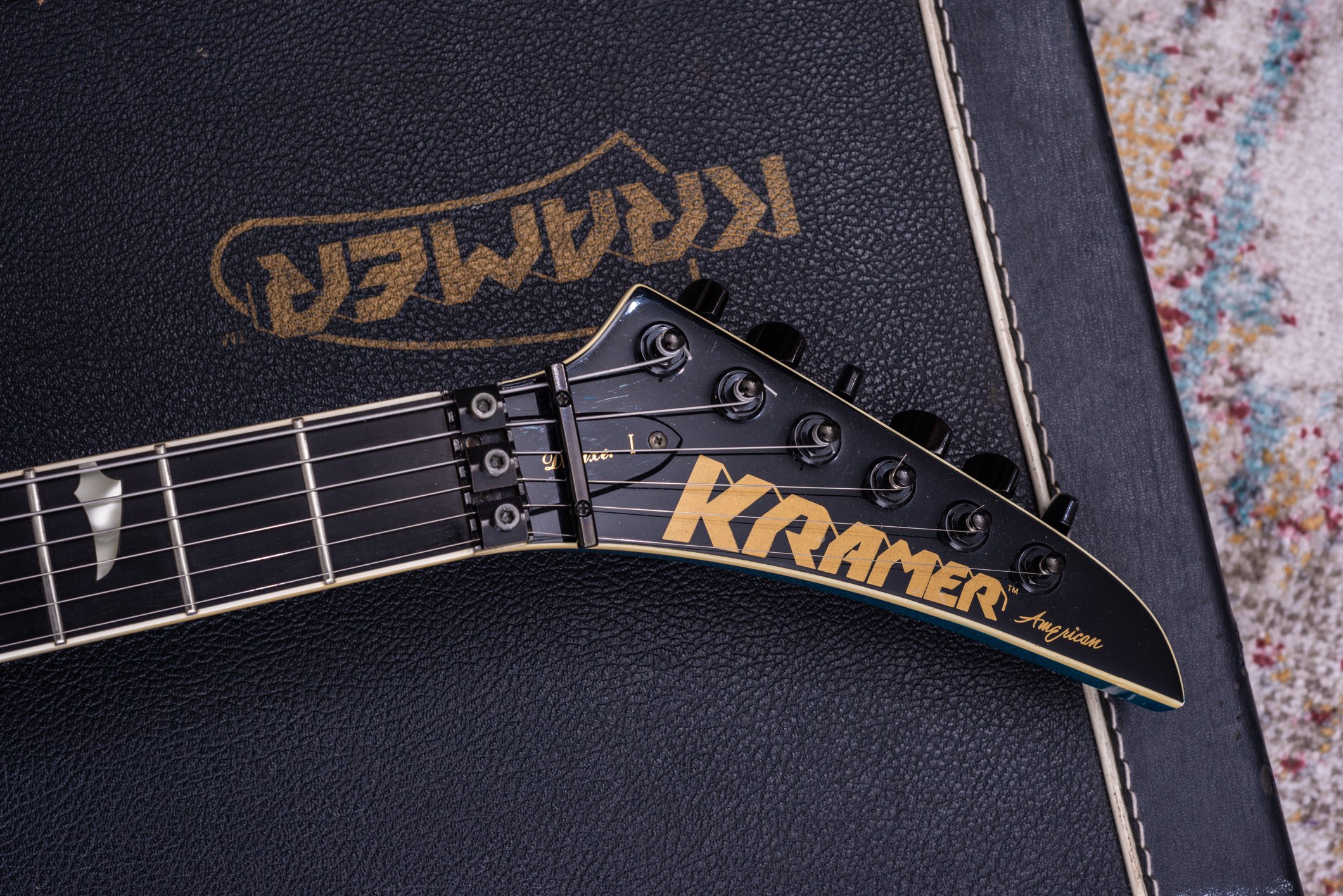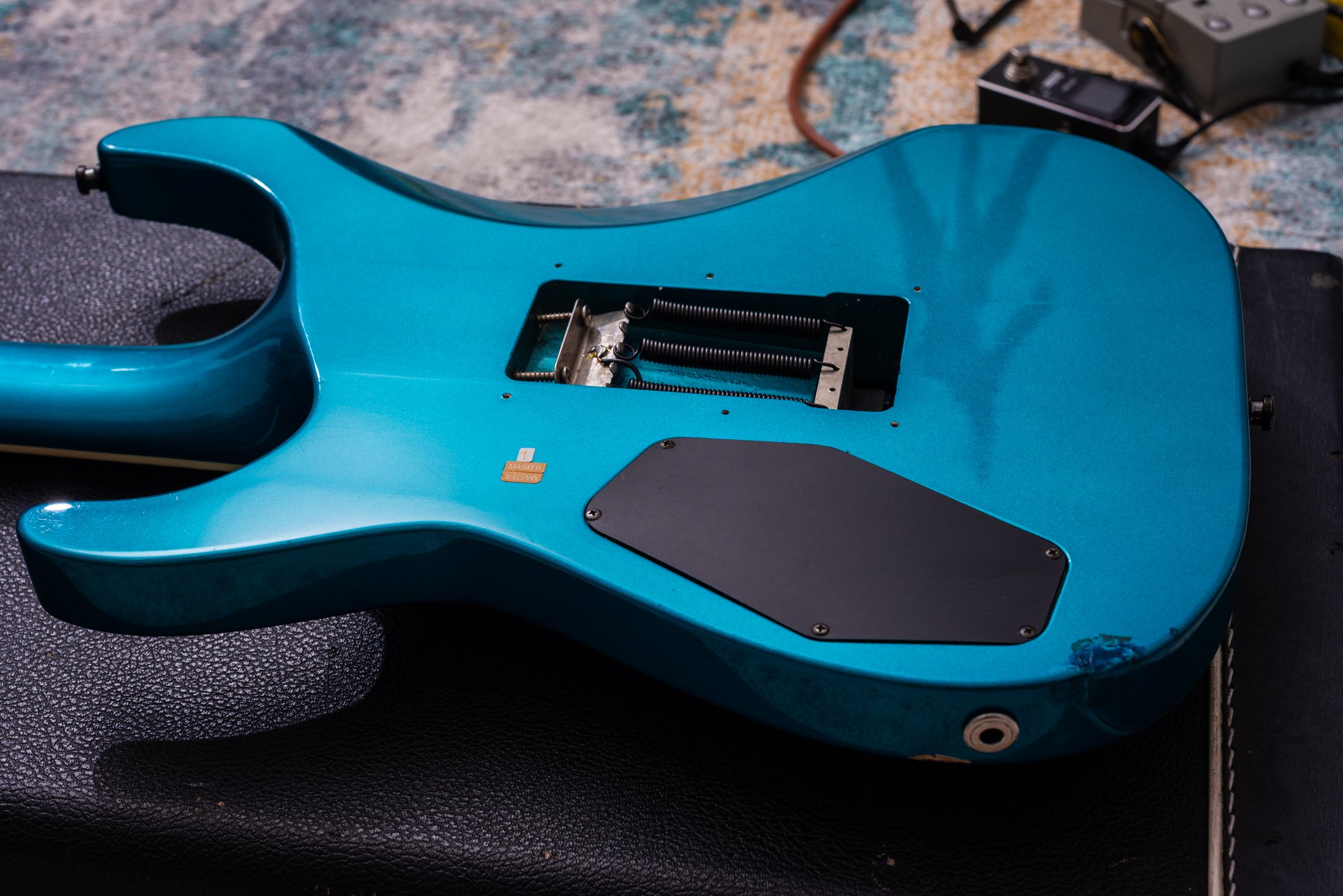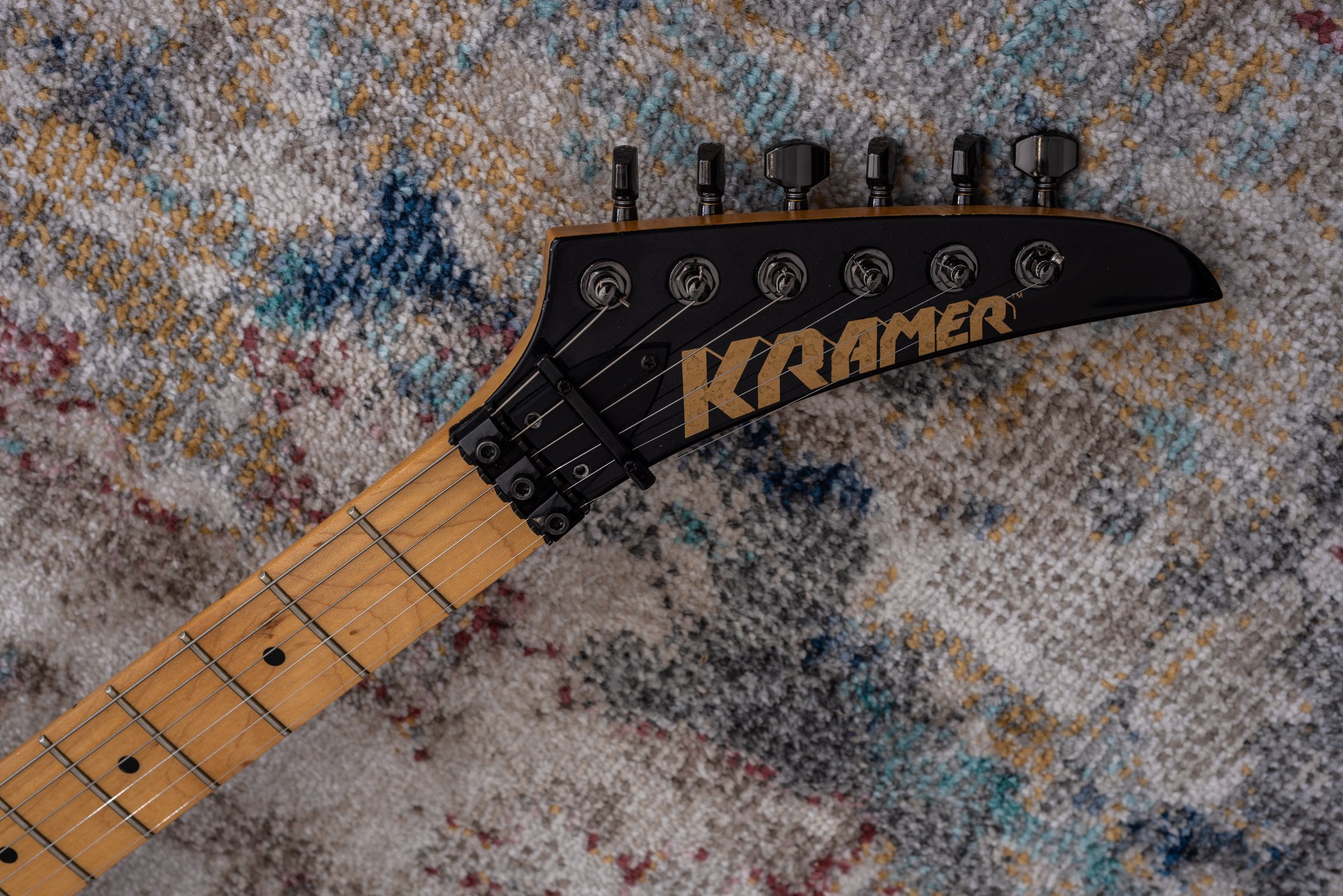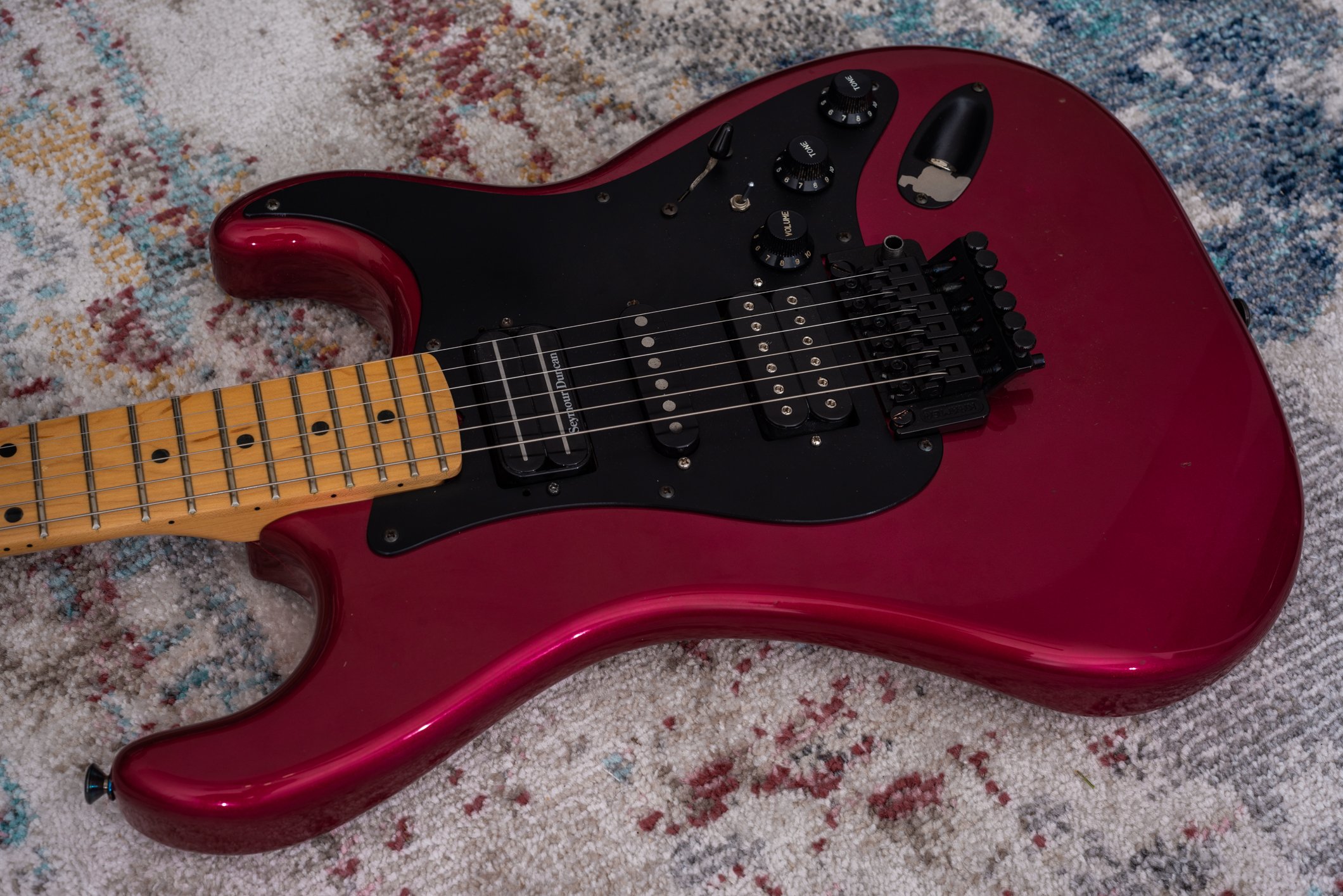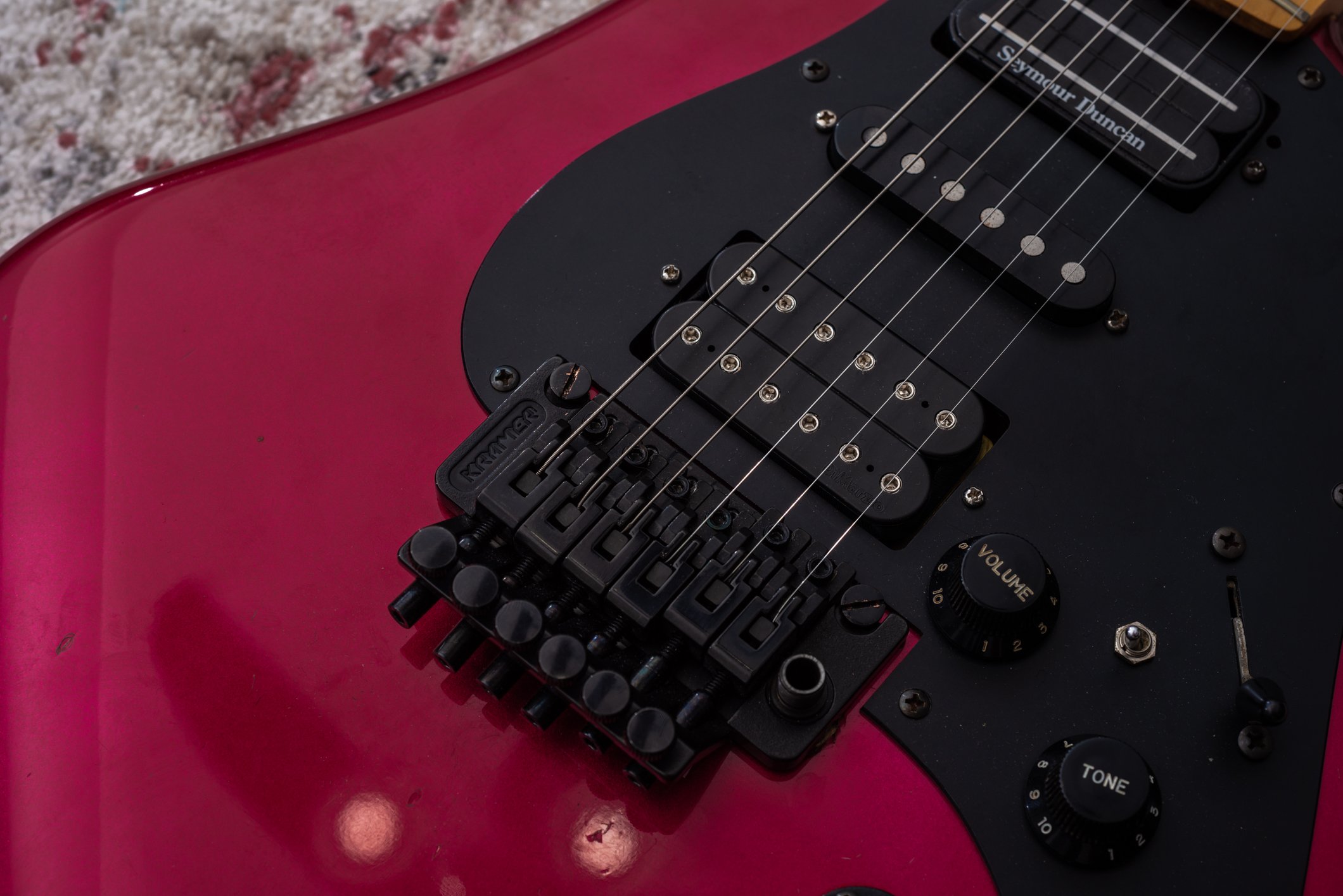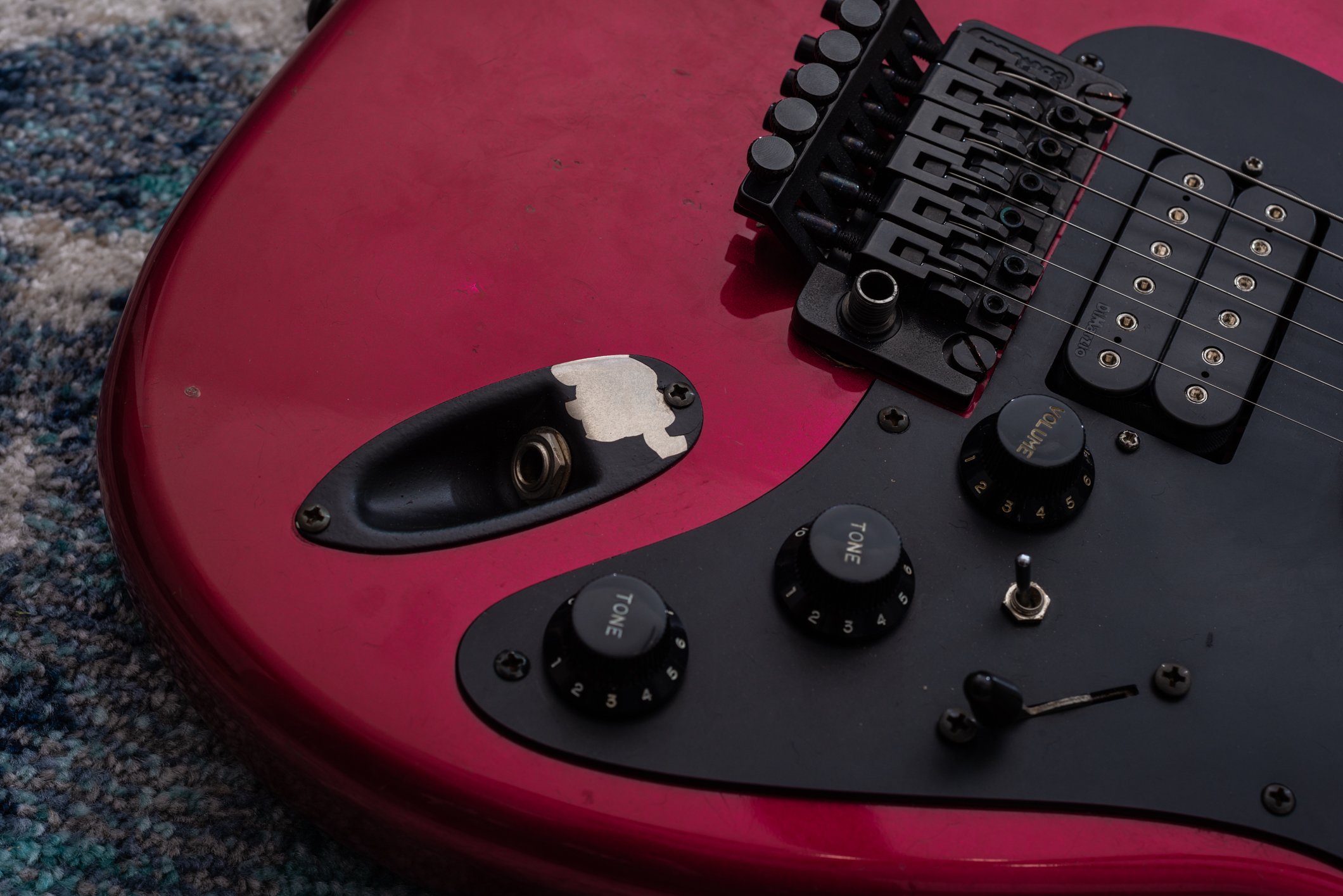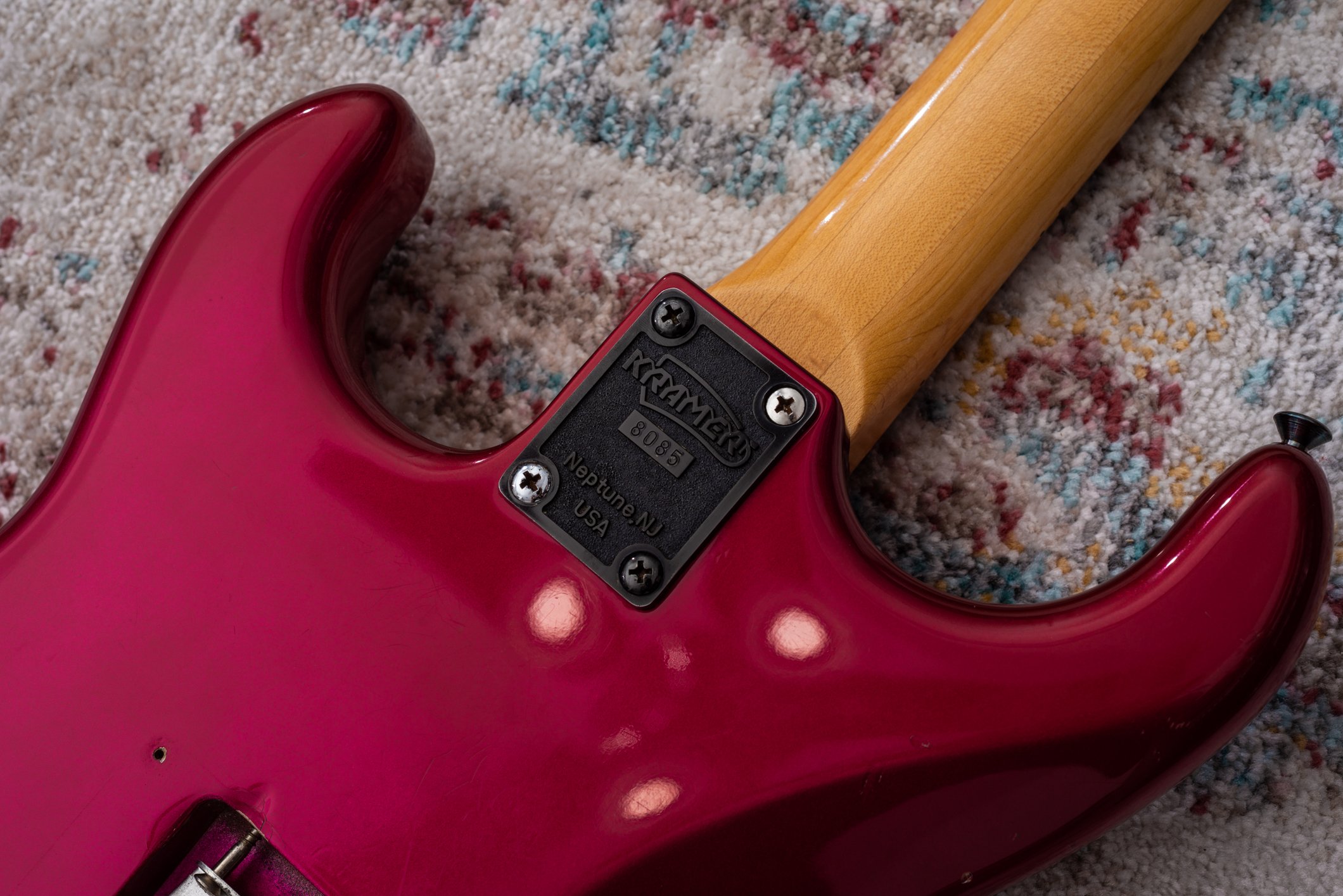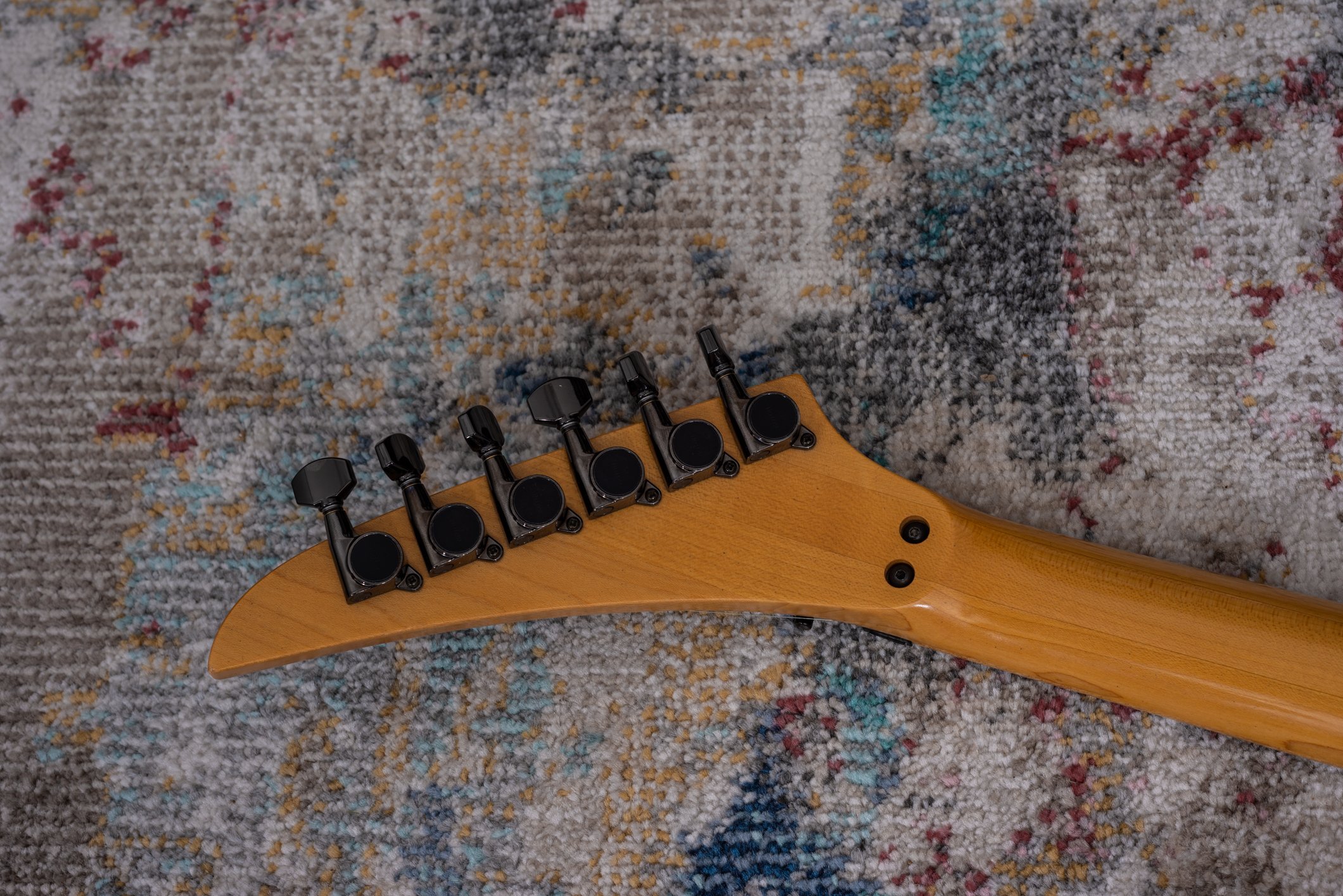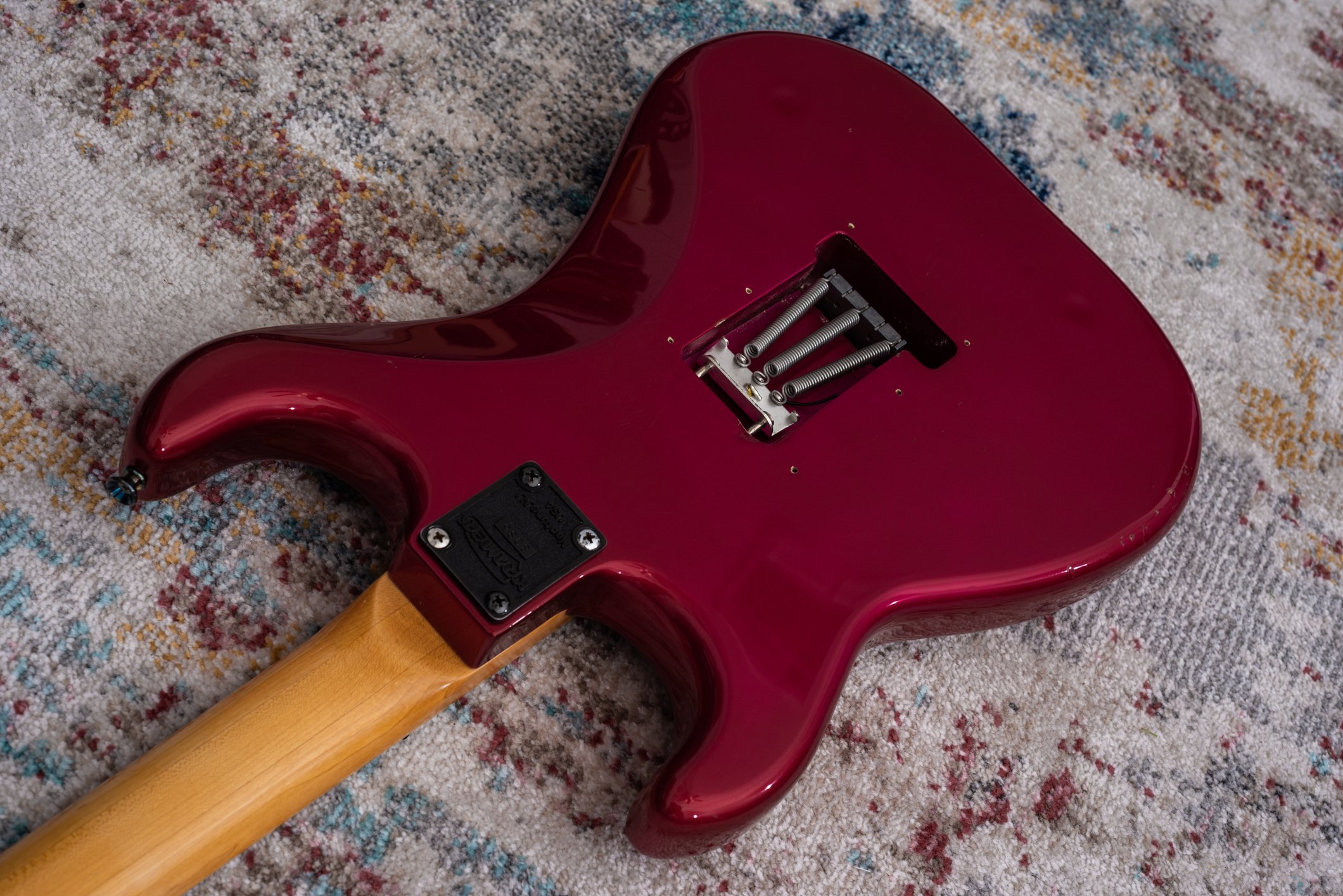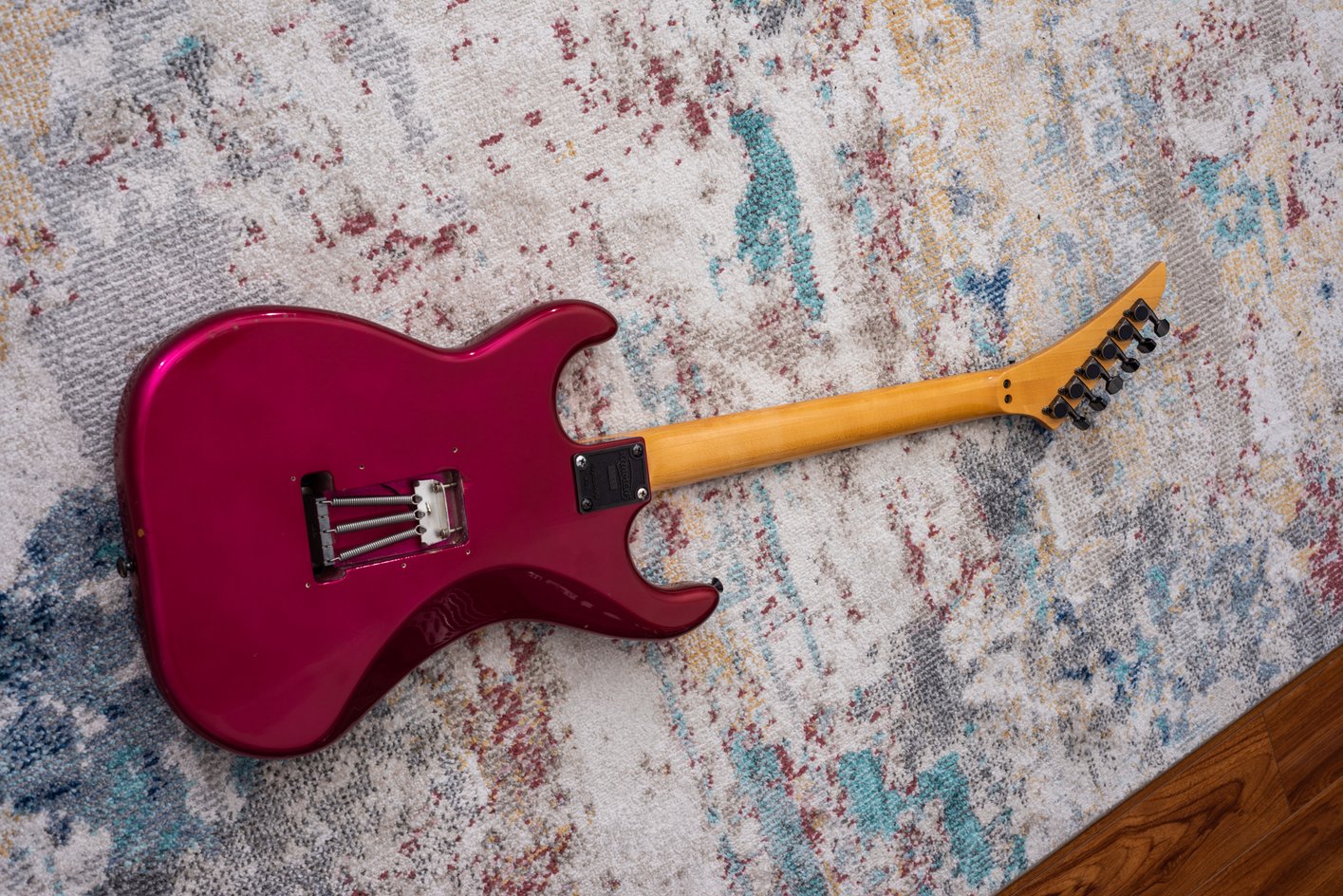Picked this very nice mid-C plate Pacer recently. The lower Floyd stud is in great shape which is always a good sign on these, and it arrived with a pair of Dimarzio Area 58 single coils and an 80s-era (but not original) Seymour Duncan JBL humbucker. This came from Guitar Center of course, and I guess no one played it before they shipped it out because the bridge pickup was ungrounded and it made all sorts of noise - unplayable plugged in. That’s ok though, because I wanted to put this old Dimarzio Tone Zone in something, and since the singles are Dimarzios it made sense - it’s back to sounding great again with new wiring.
Overall it is in extremely good condition, with barely any fret wear and no major damage to the body or neck. There is some slight scratching on the edges of the headstock and some swirls on the body from being wiped off but nothing I wouldn’t expect to see on a guitar that is now over 40 years old.
The case is also pretty cool, covered in stickers from the western USA. I find it hard to believe this was someone’s gigging guitar considering the shape it is in, but perhaps it was a backup… even then, the case is in top shape too besides the stickers.
This era of Pacer has the smaller upper horn side body shape, which is very unique feeling to play. The story goes that bodies in this era were made by ESP, but hand shaped - either at ESP or possibly re-shaped a little in the Neptune NJ factory once they came stateside. The easiest way to see this is to look at the rear pictures of a couple around this serial number and compare it to an earlier one. Look at the upper (low E string side) horn where the body contour meets, and you’ll some of them the contour comes right up to the horn with almost no gap. Earlier bodies with the larger upper horn have more space there, and other bodies have varying amounts. It’s a bit of a useless detail, but interesting either way - see the comparison image below:




